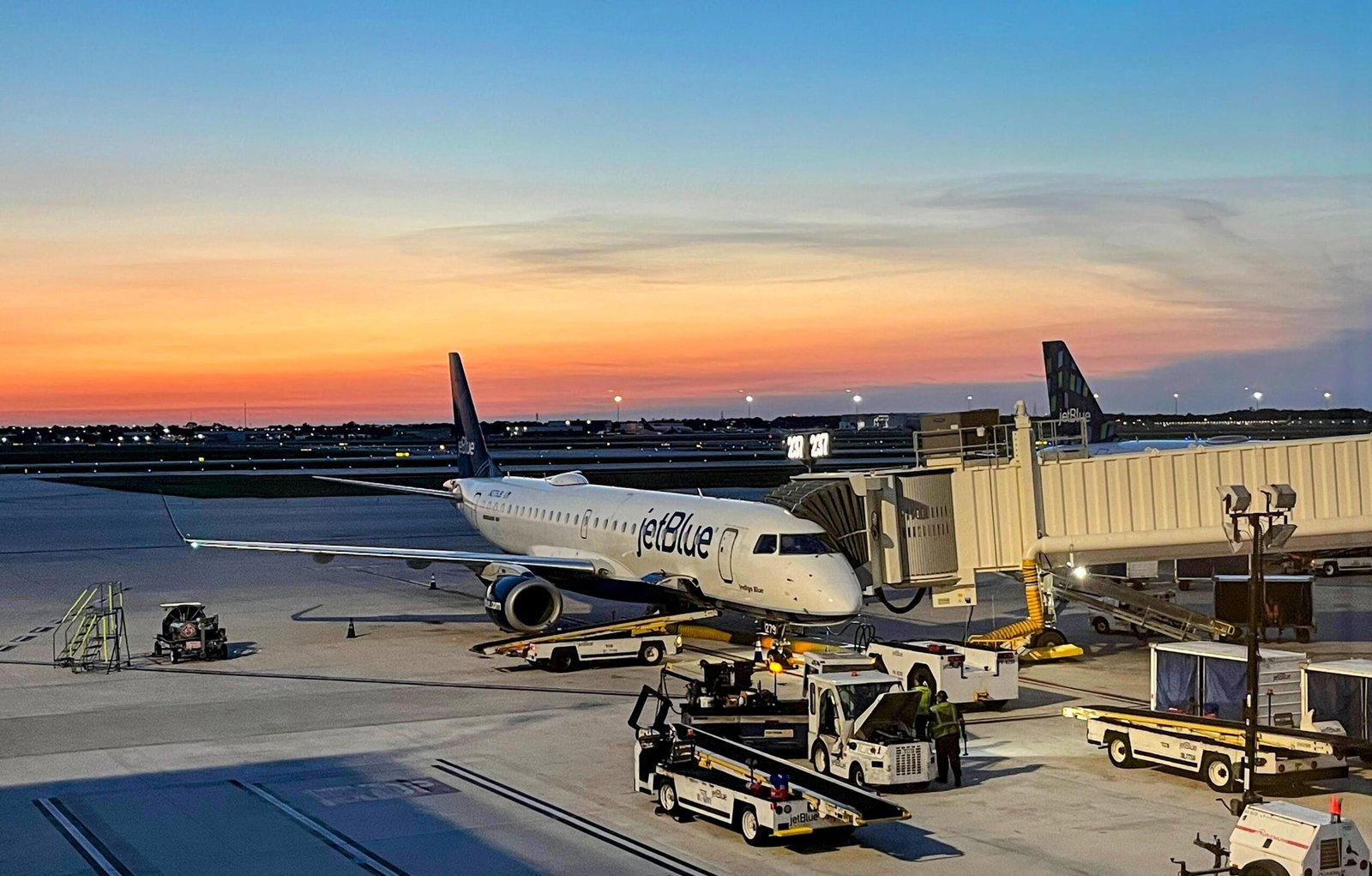
Have you ever wondered why the price of that airfare, train ticket, or hotel room keeps changing every time you search online? Well, it is most likely because of dynamic pricing, a price adjustment strategy used by the travel industry -and other businesses- to maximize profits.
More and more companies are switching to dynamic pricing, which can be good or bad for our wallets depending on low or high demand. From concerts (remember Taylor Swift’s Ticketmaster fiasco?) to Uber rides and even movie theaters, this ever-changing pricing strategy is expanding like the plague to eat out our budgets.
We can’t control the algorithms, but we can become savvy consumers by learning how to avoid paying those highest prices if we don’t have to.
What is dynamic pricing?
Dynamic pricing, also known as demand-based or time-based pricing, is a strategy used by many businesses with the purpose of getting as much money as possible from a product or service based on factors such as supply and demand. Basically, the more popular or sought-after a product or service is, the more it will cost you.
Unfortunately, this system makes it harder to predict prices, which in turn makes it more difficult to set up a fixed budget for our dream vacation. Sure, you can have a set budget, but with dynamic pricing, you may have to take some things off your list if the prices exceed your initial calculations.
Airlines have been using dynamic pricing for a long time, and hotels have been getting on board. Although you can still find hotels that publish a list of fixed prices per night, more and more chains have been switching their methods of advertising their rooms and services in order to obtain greater profits.
This can also be seen on high-speed trains in Europe, where ticket prices are not fixed and can fluctuate from day to day and even from hour to hour, depending on demand. To guarantee paying the lowest price, travelers should try to grab those tickets as soon as they become available in the booking system.
Uber explains that its dynamic pricing system can cause a temporary increase of your trip cost since the rates will go up based on variables such as distance, traffic, and “rider-to-driver” demand. That means, if there are more riders and drivers, the competition to get a ride will drive prices up. The “hot” hours, according to Uber, are usually on the weekends, especially Friday and Saturday nights; rush hour (after a typical workday), and during big events and festivals. So, the best way to save on an Uber ride is by avoiding these “peak” hours.

It pays to be popular
Businesses see an opportunity to profit if their service or product is in high demand. They can charge premium prices for their best sellers, and as long as this method keeps raking up profits, there is no slowing in sight. From a business point of view, this makes perfect sense because businesses need to make money to stay in business, right? And the travel industry is no exception.
So, what are some factors that influence the dynamic change in prices? The number one is demand. The more popular a destination (including flights, hotels, car rentals, and other services), the higher the demand, which translates to a price hike. However, on the flip side, when demand is low, consumer wallets can also take a break.
Other variables are time of booking, seasonality, competition, customer segmentation, and event calendars.
Booking way in advance versus last-minute can have a significant difference in price. There is always advisable to book your trip with weeks or even months of anticipation; although, in some cases, great deals can show up closer to your travel departure. For instance, we book two tickets from Orlando to Minneapolis for $159 each on Southwest more than a month before our departure date. However, my cheap self kept checking prices almost every day until I found that the fare went down to $129 for the exact same flight. Luckily, one of the great things about Southwest is that it allows changes without a penalty; therefore, I ended up saving $60 in total on those tickets.
It is not surprising that the travel industry is highly seasonal. Holidays, school breaks, and peak seasons will cost more due to increased demand. Holidays, school breaks, and peak seasons will -obviously- cost more due to increased demand. Common sense tells us that, in order to save we should avoid traveling during these times, unless we don’t mind (or can’t avoid) paying higher prices. However, we should not lose faith as it is possible to find a bargain if our plans are flexible. For example, I was able to find great deals by traveling on Thanksgiving Day, July 4th, and New Year’s Eve, since prices can go down if demand is low.
Competition is good if that helps bring prices down. Companies constantly monitor their competitors’ prices, which can influence how they determine what they can charge. So, it is not a coincidence that Frontier and Spirit prices are almost always similar.
Dynamic pricing allows businesses attract and retain customers by offering personalized pricing based on customer segmentation. Members of loyalty programs or user of company credit cards may receive targeted incentives and promotions. You can start by signing up for airlines, hotels, or car rental membership programs, which are usually free to join.
It is expected that large events such as sport tournaments, conferences, or festivals will attract large crowds, which can increase demand for travel services in a given destination. For example, avoid traveling to a city that is hosting the NFL Super Bowl that week, if you don’t want to pay 5-star-hotel prices for even a cheap motel next to a highway (or in the suburbs?).
Using the system in our favor
Okay. Now that we have a basic understanding of what dynamic pricing is and some factors that help drive prices up or down, it is time to focus on tips to use the system to our favor and maximize our savings.
Book early: We constantly hear and read about the benefits of booking your travel as early as possible, which will result in more savings overall -in most cases. Since dynamic pricing is based on demand, prices can drop closer to departure date if there is still a good number of unsold seats. In this situation, the best strategy would be to book your flight with a price drop protection guarantee program, which will pay you the difference, or price freeze service that will do exactly that, freeze the fare price (usually for a fee) to keep that option available for some time if you are not yet ready to commit to buying it.
Book last minute: Sometimes the best deals are for those who wait. However, it is implied that this is not always the best strategy if your travel plans are not flexible. Thanks to dynamic pricing, those unsold seats can mean huge savings for you. So, don’t lose hope and keep refreshing your flight search!
Use fare alerts: Also thanks to dynamic pricing, airfares can fluctuate daily and even by the hour, which makes it difficult to keep up with all the changes on that ticket you want to book. A better and more efficient way to stay informed about price changes is by setting up fare alerts offered by travel sites such as Google Flights, Skyscanner, or Airfarewatchdog, and apps like Hopper. If you have a Capital One credit card that offers access to its travel portal, there you can also set fare alerts to be notified about when is a good time to book that ticket.
After you enter your travel info, including desired routes, dates, preferred departure airport, etc., the fare alert tool will notify you (usually via email) when prices drop for flights you are interested in. Keep in mind that, due to dynamic pricing, those lower fares might not be available for a long time, so you should book it as soon as you can if you find that it is a great deal.
Compare prices: Even if you are a big fan of Google Flights or Skyscanner, you should be curious about what prices are showing up on other platforms, including airline official websites. For example, Southwest fares are only available on its site; therefore, you could miss a great deal if you are looking exclusively on travel search engines.
In Summary
The bottom line is that the dynamic pricing system is expanding not only in the travel industry but also in other sectors such as entertainment and sporting events. The fluctuation in prices makes it hard for consumers to keep up with the constant changes and set up a budget beforehand. However, as prices go up, they can also go down, and this is where we can take advantage of the system to save big time, armed with the right tools and a bit of persistence.




